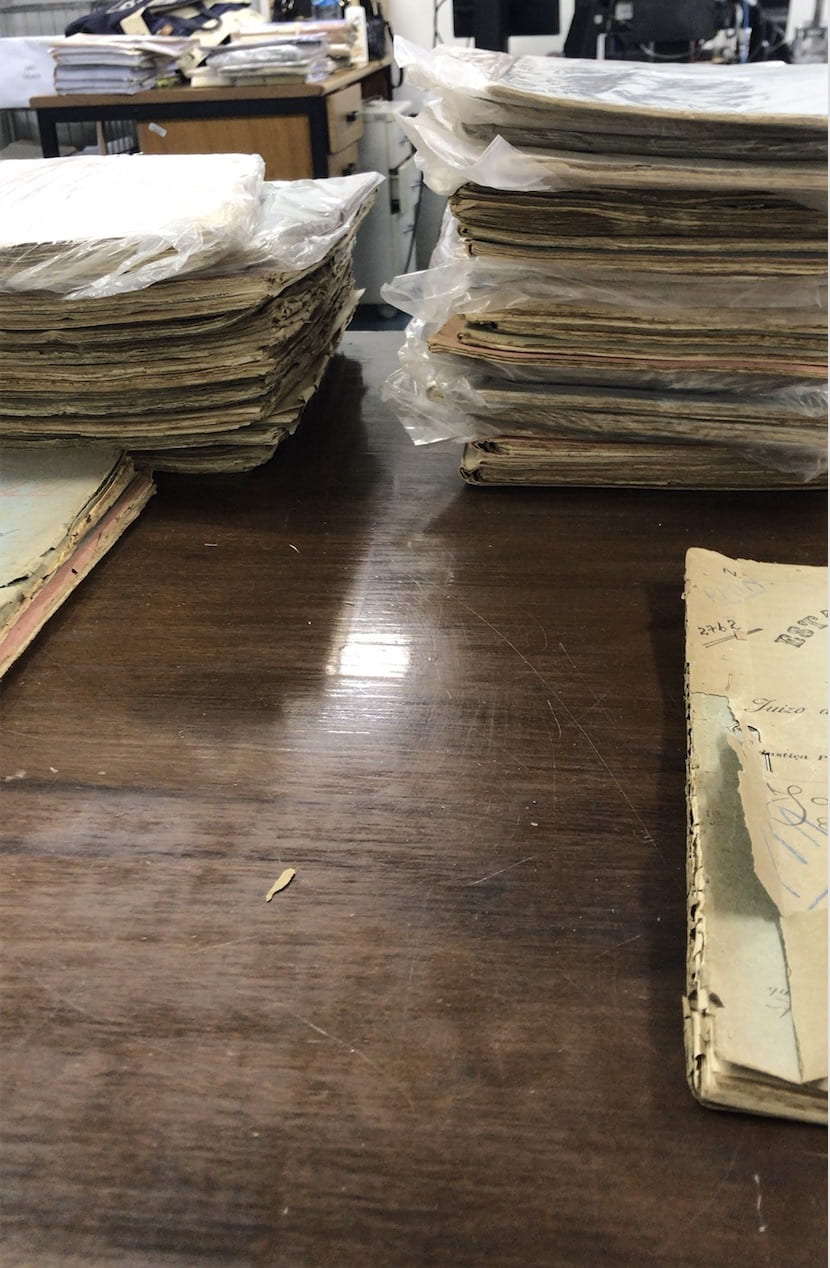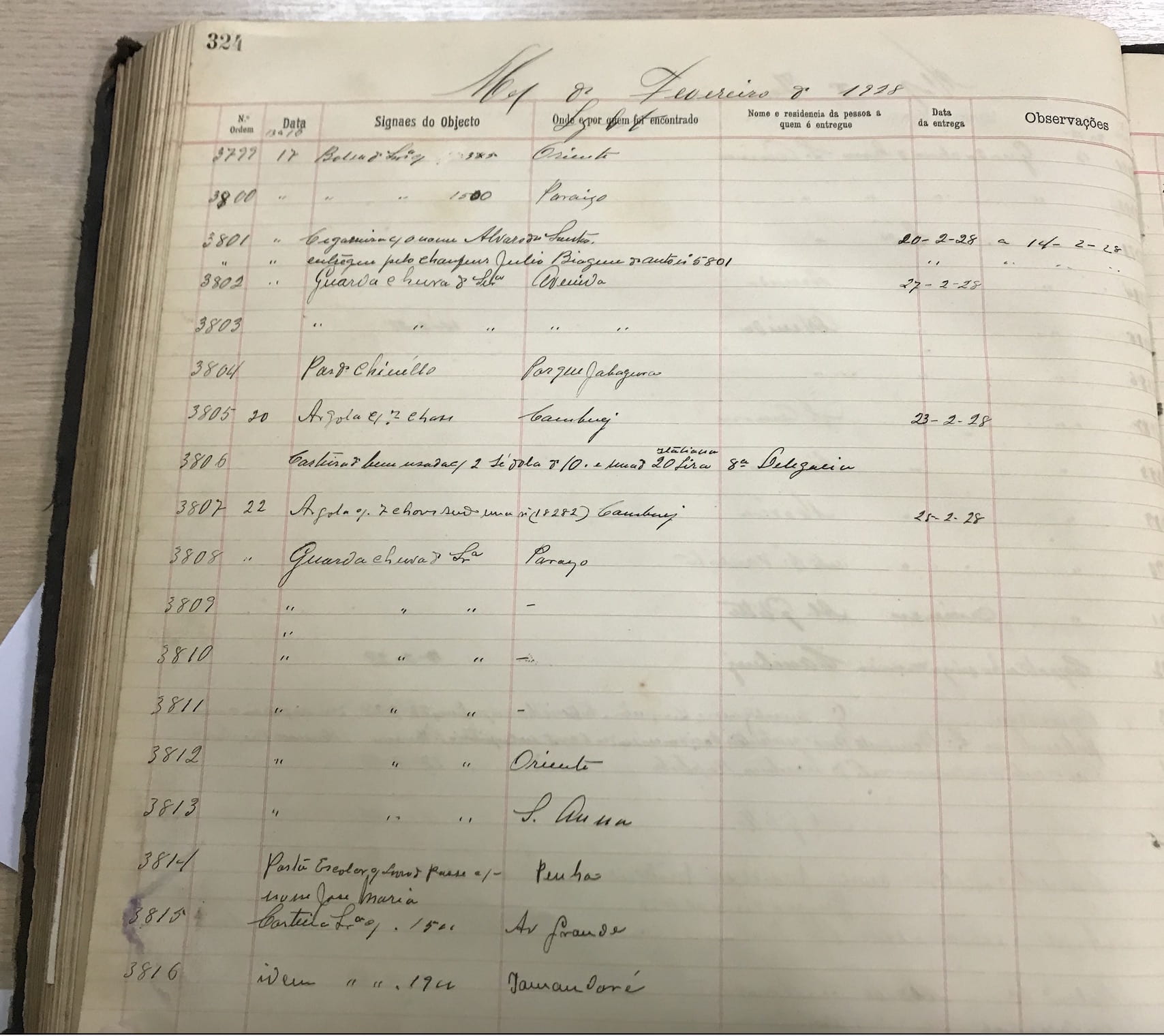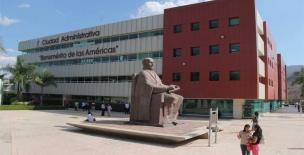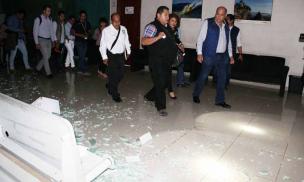Jun 10, 2020 |
Hanna Manente Nunes, PhD Candidate, History
I started archival research for my dissertation roughly two years ago in the Summer of 2018. At that point I had no such thing as a project, although I did have ideas, some better articulated than others, and I had questions, though none of them were particularly clear. With this, I spent three months at São Paulo’s Judicial Archive (ATJSP) photographing over 500 criminal cases (Figure 1). At the beginning of the following Spring quarter, I received a text message from one of ATJSP’s archivists. The state government, she wrote, was shutting down the archive’s operations in order to cut costs. Documents would be transferred to a private storage facility in a neighboring city, but it was unclear when and under which circumstances they would be made available again. If I still had work to do, she warned, I had to do it soon because in three weeks’ time the building would be closed. From Chicago, all I could do was delegate the data collecting to others. The coordinated effort of a good partner and four willing undergraduates led to almost 200 cases being sorted and photographed in those three fateful weeks. It was out of luck that I began my research when and where I did, befriending the right person at the right time. I was lucky to find five people willing to fully dedicate themselves to my research for almost a month. Luck, I have learned, is an intrinsic part of the process.

Figure 1: Unsorted criminal cases at the now deactivated São Paulo Judicial Archive, taken in the Summer of 2018
When Spring of 2019 came after what felt like a long-lasting winter, I had more pictures than I could possibly read stored in the cloud. I also, quite surprisingly, was convinced I had a plan and foundation for my dissertation. Somehow, I managed to successfully convince others of my plan, and so I became a candidate. Instead of haphazardly-put-together ideas, I had ideas. Instead of convoluted questions, I had questions. With these ideas and questions, I walked into the city of São Paulo’s Municipal Archive. Two weeks in, my plan began to falter. The documents refused to conform to my beautifully formulated inquiries. They kept stretching me toward the margins of pages, making me scribble thoughts as they came in. Days passed in a haze, partially due to the unforgiving arrival of the Brazilian summer in that tiny room with no A/C and a barely functioning fan, but also due to the daily exercise of letting go. Every document that went from a dusty box to the cloud moved me further away from the plan that had made me a candidate. I had invested months in pulling my best thoughts together into one cohesive narrative, but the documents did not seem to care. When I finally gathered up the courage to send a report to my committee, it read “(all) things have changed.” The haze, I have learned, is an intrinsic part of the process.
I had very few project-related certainties left when the world as a whole lost its footing in the Winter quarter of 2020. I knew, for instance, that my dissertation was going to be about consumption, popular commercial practices, and material exchanges that mediated São Paulo’s urban space in the early twentieth century. I knew, based on more than 200 gigabytes of photographed documents I stored in the cloud, that the picture I will eventually sketch is one of a city largely connected by criminal, illegal, and informal economic activities. I knew, as annotated on a lost and found book kept by São Paulo’s Central Precinct, that on February 22, 1928, thirteen people had forgotten their umbrellas in the city’s trams (Figure 2). But I did not know if it actually rained on February 22, 1928, and that was key. While the forgotten umbrellas seemed to indicate so, that was not definite proof. Looking for weather forecasts, I found a column at the Correio Paulistano newspaper which luckily stated on February 23rd that on the previous day the sky had been overcast and rainy (Figure 3). Digging a bit deeper, I found several news reports published by the Estado de São Paulo which made note of a severe thunderstorm that had befallen the city. Bingo!

Figure 2: A 1928 page of the “lost and found” logbook kept by São Paulo’s First Precinct, held in São Paulo’s Public Archive

Figure 3: The meteorological report published on February 23, 1928, in the Correio Paulistano
I have come to accept uncertainty, luck, and being dazed and confused as intrinsic parts of the research process. All that I cannot control plays as formative role in my work as all that I can control. The line, however, needs to be drawn somewhere. For now, I have drawn mine at having the first sentence of my dissertation’s opening chapter being factually right. The sentence might very well change in two weeks’ time. It quite likely will, but until then, no other words will ever sound so accomplished. To say that it rained on February 22, 1928, would be an understatement. On that day, in the dazzling city of São Paulo, it poured.

Dec 15, 2017 |
Chris Gatto, PhD Candidate, History
On Thursday, September 7, 2017, a magnitude 8.1 earthquake struck off the Pacific coast of Mexico, killing over 100 individuals and damaging thousands of homes in the southern states of Chiapas, Oaxaca, and Tobasco. This was the strongest earthquake the country had experienced since 1787. While earthquakes are a fairly common occurrence in Mexico, this particular event caused more alarm and destruction than could have ever been anticipated.
The earthquake struck at approximately 11:30 pm, and I acutely remember standing in the bathroom of my Airbnb in Oaxaca City, brushing my teeth and getting ready to go to bed. I was concluding nearly two months of archival research in Oaxaca for my dissertation, entitled “From Cochineal to Coffee: The Making of a New Rural Society in Miahuatlán, Oaxaca, 1780–1880.” The door to my small apartment began to shake violently, and my initial thought was that someone was trying to break in. As I walked over to see what was happening, I immediately fell to the ground, as the floor beneath me began to shake. The power in the city then went out, and in complete darkness it became all too clear to me and everyone else in the city what was occurring.
While my first thought was to text my anxious mother (before she uncovered the news of the earthquake on her own), I then began to consider how this would affect the work I still needed to get done. I was finishing nearly six weeks of research in the Archivo Histórico de Notarías, a vast archive inside the Church of Santo Domingo right in the heart of Oaxaca City. This archive is home to nearly 2,000 volumes of notarial documents from the early 17th century all the way up until the 20th century, including land purchases and rentals, wills, contracts, and inventories. Needless to say, this archive plays an essential role in my dissertation, which explores the dramatic agricultural transformation that occurred in the southern part of the state from cochineal to coffee cultivation over the course of the 19th century.
The Archivo Histórico de Notarías is now fully digitalized, but researchers still need to spend considerable amounts of time with the original documents, identifying book and page numbers before proceeding to the Dirección General de Notarías, an office located in the Ciudad Administrativa about 15 minutes outside of the city, to begin a complicated process (trámite) of requesting digital copies. While I knew the Archivo itself would be closed for several days (as it was, although thankfully with limited damage), I was also concerned about the Ciudad Administrativa, where I needed to travel with a flash drive to collect all the images I had been identifying over the past month.
-

-
The main square of the Ciudad Administrativa on an average day
-

-
Ciudad Administrativa after the earthquake
-

-
Ciudad Administrativa after the earthquake
The first image above depicts the main square of the Ciudad Administrativa on an average day, while the next two images reflect the damage suffered following the earthquake. Suffice it to say, these offices would not reopen for quite some time, as government workers refused to return to the campus until proper working conditions had been restored. I remember visiting the Ciudad Administrativa during that week, hoping I could find someone, anyone, that could help me gain access to the hard drive and expedite the transfer of images. However, I was promptly turned away, as they insisted I would have to return the following week. Unfortunately, I did not have another week, and I flew back to Chicago on September 16 with the sick feeling that so much time and effort had been expended for nothing. While I was determined to return to Oaxaca soon to complete my research, I knew there were further challenges I would eventually have to overcome…
-

-
Protests at the Ciudad Administrativa
-

-
Protests at the Ciudad Administrativa
The Ciudad Administrativa, along with the Ciudad Judicial, are the two largest government offices in Oaxaca. However, on any given day, access to these offices is severely restricted, since they become the site for a range of protests from different social organizations and unions across the region, including taxi drivers (taxistas), teachers’ unions (maestros), and indigenous rights activists. These groups block access to the Ciudad Administrativa in different and often inventive ways (as shown in the images above), and when this happens, nobody can enter or leave the campus until the groups disassemble. These protests have become so routine that the public has become accustomed to the disruptions and adjust their schedules accordingly. Whatever one thinks of the validity of these protests (I happen to be quite sympathetic), they cause significant disturbances in the life of ordinary residents in the city, and you will often hear people expressing sympathy for the causes but not necessarily the tactics.
In organizing my trip back to Oaxaca, I knew I would have to allow several days for a procedure that should only take a couple hours. On the week of October 23, 2017, I flew back to Oaxaca, allowing five days (Monday through Friday) to get my work completed. I anxiously checked my Twitter feed on an hourly basis to identify reports of potential blockades (bloqueos) at the government campus. As it turns out, I was able find a small window early Tuesday morning to enter the Ciudad Administrativa and complete the process of acquiring nearly 1,000 images that will hopefully form an important part of my dissertation. Shortly after I entered, the campus was closed off, and we could not leave until 6pm that evening. The campus experienced similar protests on Wednesday, Thursday, and Friday of that week, and thus I was incredibly fortunate to find the small window that I did to get my work completed.
Researchers in Mexico and across Latin America face these types of logistical challenges on a regular basis, and I do not mean to suggest that what I have faced is unique or atypical in any way. But my work in Oaxaca does show how precarious the work of historians can be, given that we are forced to rely on documents that readily become available or unavailable according to shifting circumstances beyond our control. I hope my dissertation can make good use of the materials I have been lucky enough to uncover, and shed light on historical processes that help us better understand such a dynamic and important region of Mexico.









